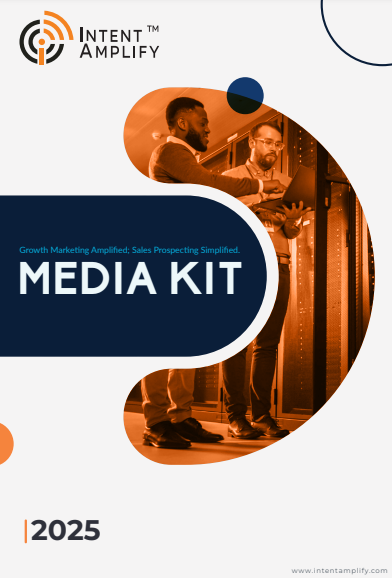
Modern B2B Landing Pages in 2025: What’s Working and What’s Not
- Last updated on: July 2, 2025
B2B landing pages have evolved quietly. Now, in 2025, marketers are no longer hemmed in by the strict templates of yesteryear and are adopting smarter, more responsive page designs. But in making that transition, many are discovering a hard lesson: while strategies have shifted, underlying principles haven’t. Simplicity continues to reign over complexity. Relevance remains the driver of results. And just because it’s new and shiny doesn’t mean every feature converts.
This article is the second in our two-part series. The first explored why b2b landing pages still matter in B2B lead generation today. Now, we turn our attention to how the most successful brands are executing them and where many are going wrong.
A New Era of Intelligent Design
B2B landing pages are no longer static digital brochures. They’ve become dynamic, behavior-aware conversion hubs. Marketers are using behavioral signals, CRM insights, and real-time engagement data to tailor landing page experiences in ways that would have seemed excessive or even impossible a few years ago.
Today’s landing pages often adapt their content to the visitor’s industry, company size, or buying stage. For instance, a visitor from a health enterprise may be shown compliance and data integrity messaging, while a SaaS customer is presented with integration and user onboarding use cases. Such specificity, facilitated by CRM and AI-driven targeting, makes a tangible difference. According to Adobe’s research, using behavioral targeting and personalization can improve digital campaign ROI by as much as 68%.
But whereas personalization has added richness, it’s also introduced risk. When used without context or carried too far, it comes across as intrusive or disorienting. That is, AI needs to be managed not only as an automation tool, but as a relevance amplifier.
Interactivity That Serves a Purpose
One of the most prominent shifts in 2025 is the ubiquity of interactive elements. B2B Landing pages now routinely feature ROI calculators, walkthroughs, video explainers embedded within, and dynamic CTAs that change when a user scrolls or hovers. Far from flash for flash’s sake, these elements are geared to enhance dwell time, enhance retention of information, and aid in conversion.
Data from Zebracat shows that interactive media, like UGC videos and embedded tools—can yield 2.2× longer engagement spans. For instance, an interactive savings calculator that reveals to buyers the approximate ROI of implementing a solution will perform much better than a PDF.
That being said, interactivity for the sake of interactivity infrequently generates results. If those features detract from the essential offer or make the next step more difficult, they are conversion killers. Great B2B landing pages leverage interactivity as a clarity mechanism, not an exercise in creativity.
Forms Evolved: Smarter Data Capture
Form fatigue is a real thing. In 2025, B2B buyers are quick to bail when confronted with long or irrelevant input fields. That’s why progressive profiling, gathering data in small steps across several visits, is now the standard. Rather than requesting 8 fields at one time, today’s landing pages begin with 2 or 3 crucial facts and then collect more information as the user consumes more content.
Smart autofill is also cutting friction. As repeat visitors come back, cookies and CRMs prefill form fields to make the process smoother. Some businesses are even testing authentication-based entry, where a user can skip form fields altogether by logging in via LinkedIn or entering a validated business email address.
A 2024 WARC report discovered that progressive forms on landing pages achieved a 37% boost in lead capture with no diminishment in lead quality. The message is implicit: marketers don’t require more information; they need improved timing to capture it.
Mobile Optimization Is No Longer Optional
Mobile-first has firmly hit B2B. Think with Google (2025) reports that more than 70% of B2B search behavior now initiates on mobile. That includes not only initial research but also mid-funnel engagement and decision-stage exploration. In that case, a landing page that is not smartphone- and tablet-optimized isn’t merely underperforming, it’s losing qualified leads.
The top B2B landing pages of today are built mobile-first and then scaled up to desktop. Vertical layouts and scroll-friendly, thumb-clickable buttons, and optimized load speeds for LTE and 5G networks. With over a 90% bump in bounce rates when pages load in more than three seconds, speed is equal to messaging.
Mobile optimization is not merely about screen real estate. It is about context. Mobile users tend to be multitasking, in motion, or operating from a different paradigm than desktop users. That requires that CTAs be evident, forms be reduced, and the path to value be unambiguously concise.
What No Longer Works for B2B Landing Pages in 2025
As landing pages have changed, so have the intentions of B2B buyers. A lot of tactics that used to yield decent results today are actually a hindrance. In 2025, the difference between low-performing habits and top-performing strategies is larger than ever. Let’s dissect the particular aspects that no longer work for today’s conversion objectives.
Over-Gating Without Value Exchange
One of the greatest errors that marketers keep repeating is requiring form fills as a precursor to providing any real value. This tactic might have been effective a decade back, but today’s decision-makers expect to see evidence of relevance before they are willing to trade their contact info. Gating introductory content such as blog summaries, top-of-funnel guides, or lightly detailed product descriptions tends to lead to instantaneous drop-offs. According to Hubspot, 41% of B2B purchasers now leave landing pages that ask for data prior to determining content relevance.
To resolve this, top marketers are adopting a value-first approach. Rather than concealing everything behind a form, they offer quick content previews, emphasize pertinent insights, or provide partial access immediately. This gains the visitor’s trust and makes the chances of voluntary participation later in the process higher.
Generic, Template-Based Experiences
Vague headlines, generic images, and boilerplate templates based landing pages don’t resonate with today’s segmented crowds. B2B purchasers nowadays demand messaging that addresses them directly about their position, issues, and where they currently are in the buying process. A CTO considering infrastructure software doesn’t need the same message as a marketing director considering campaign platforms.
Generic templates cannot provide the kind of nuance and credibility required to cut through the noise in an oversaturated marketplace. Great conversion landing pages of 2025 tend to be dynamically customized to specific personas. They employ specific language, contextual imagery, and applicable CTAs that make the next step painfully obvious and worthwhile. If your page would speak to everybody, it’s probably speaking to nobody.
Putting Vanity Metrics Before Pipeline Contribution
There is always a temptation to measure landing page success by surface-level metrics: time on page, click-through rate, or bounce rate. Helpful in diagnostics, these numbers are usually not good proxies for business impact. A page that receives long engagement but creates no qualified opportunities is not a success; it’s a distraction.
In 2025, established B2B marketing groups are trending towards richer performance insights. Mature teams track lead-to-pipeline velocity, impact on deal progress, and revenue contribution over time. Attribution modeling, particularly multi-touch models, is assisting marketers in assessing how landing pages facilitate broader buying experiences instead of single, specific interactions. Unless a page moves actual conversations with the sales team forward, it must be rebuilt.
How to Win with Landing Pages in 2025
Top-performing landing pages today are based on strategy, not quick fixes. They are designed with a definite knowledge of the buyer’s journey and optimized directly for sales results.
At the top of the funnel, landing pages must teach and inform. They provide low-friction conversion options such as one-click downloads or newsletter subscriptions, with sometimes no form at all. When the buyer progresses to the middle of the funnel, the experience becomes richer. Interactive guides, analyst reports, or comparison matrices are useful gated content gathered with just enough information to continue the journey.
Bottom-of-funnel landing pages are dedicated to decision readiness. They have prominent CTAs such as “Book a 15-minute consultation” or “Request a tailored proposal.” These pages are deeply integrated with sales calendars, automation workflows, and live notifications for SDR teams. The handoff between the sales and marketing team is seamless since the landing page has already qualified the buyer.
Effective marketers are also segmenting landing pages by persona. Economic buyers are interested in cost savings and ROI stories, whereas technical evaluators are interested in integrations, scalability, and documentation. End users, however, must be assured that it is easy to adopt. There will never be a single generic message that converts all three.
Last but not least, integration matters. A landing page is not a terminus; it’s the start of a tracked, personalized, continuous interaction. Pages that link to CRM systems, intent data platforms, and lead scoring engines are the ones that constantly power the pipeline and reduce sales cycles.
Why This Article Completes the Picture
In our previous article Why Landing Pages Still Drive B2B Lead Generation Success in 2025 we argued the case for why landing pages are still essential in an age that is overwhelmed with funnel-less experiences, chatbots, and conversational AI. This article puts the finishing touches on the picture by describing how to transform those landing pages to keep up with today’s buyer demands.
To lead in 2025, you require both viewpoints: strategic foundation and tactical execution. If you haven’t read Part 1 as of yet, we strongly encourage you to begin there.
Read Part 1: Why Landing Pages Still Drive B2B Lead Generation Success in 2025
FAQs
1. What constitutes a “modern” 2025 B2B landing page?
A contemporary landing page is context-aware, mobile-first, and dynamically personalized. It responds to user context, delivers instant utility, and is integrated with CRM and sales processes.
2. Should I continue to gate my content?
Yes, but discriminately. Gating is most effective when value is demonstrated up front. Think about previewing or summarizing content before asking for user data.
3. How critical is interactivity to conversions?
Interactivity is beneficial, but only if it complements the decision-making process. Calculators, demos, and dynamic CTAs can enhance interaction if they align with user intent.
4. How do I get more leads without chasing away visitors?
Use progressive profiling, pre-filled forms, and contextual data capture. Minimize friction, not more fields.
5. What is the most critical metric for landing page success?
Aside from conversion rate, consider how the landing page affects pipeline speed, drives deal movement, and aligns with sales results.



